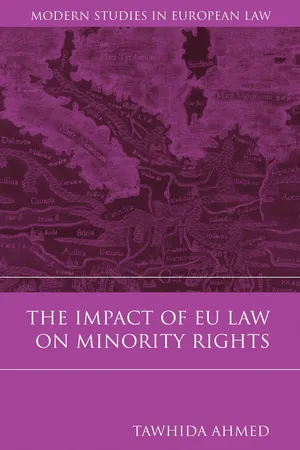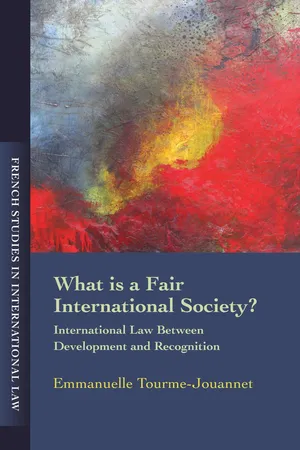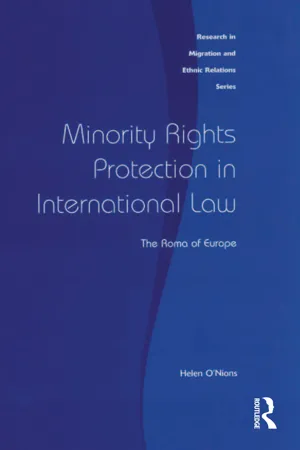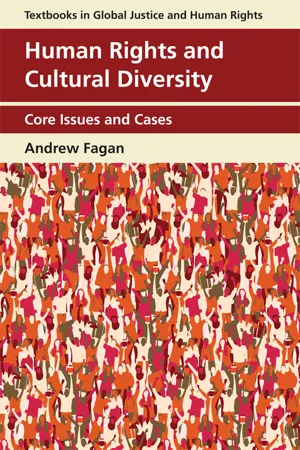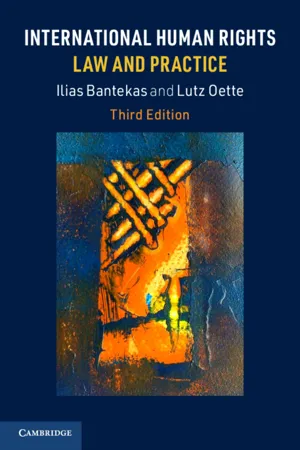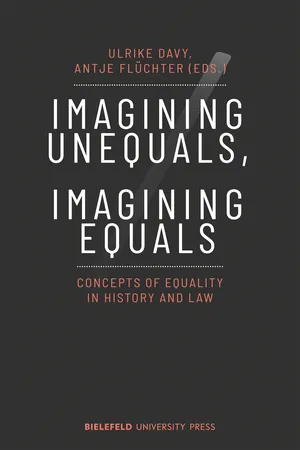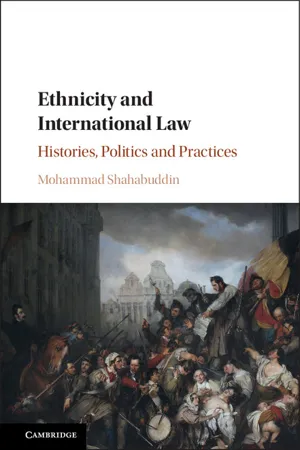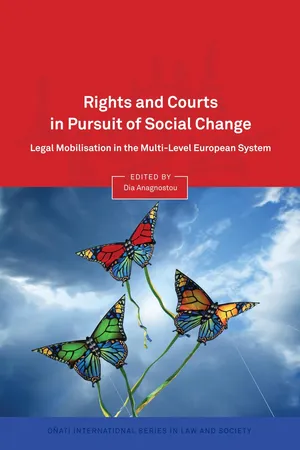Politics & International Relations
Minority Rights
Minority rights refer to the protection and promotion of the rights of individuals or groups who are in a numerical minority within a society. These rights aim to ensure equal treatment, non-discrimination, and the ability to participate fully in political, social, and cultural life. They often encompass issues such as language rights, religious freedom, and representation in decision-making processes.
Written by Perlego with AI-assistance
Related key terms
1 of 5
10 Key excerpts on "Minority Rights"
- eBook - PDF
Who Speaks for Roma?
Political Representation of a Transnational Minority Community
- Aidan McGarry(Author)
- 2010(Publication Date)
- Continuum(Publisher)
A minority is usually understood to mean an ethnic, religious, political or other group which are in a non-dominant position vis-à-vis other groups in society. A right is typically understood to mean what is morally good, legal or proper and is synonymous with privilege, duty and responsibility. Taken together we can deduce that Minority Rights are claims made by minority groups which enable them to enjoy or have access to certain priv-ileges which they would not normally enjoy given their social, political or economic marginalization, relative to other groups within a society. While there has been rights-based research conducted in certain areas particu-larly in Central and Eastern Europe (Jovanovic 2002; Singh Inder 2002), most academic discourse focuses on international and regional organiza-tions, treaties, instruments and laws. 3 Thornberry (1991, 7) demonstrates the ambiguity of Minority Rights, ‘some Minority Rights look like process rights (the development of identity and culture, the education continuum); others look like civil and political rights – speech, worship, participation, names, contacts across frontiers.’ Therefore the rights accorded to minori-ties are manifest in a number of institutional fora, which only political processes can take account of. Ethnic mobilization results in the creation of diverse, though not neces-sarily competing, organizing structures of representation and governmental strategies to address minority protection. These include: Rights-based Theories on Minorities 65 minority self-governments; the granting of territorial or cultural auto-nomy to minority groups; the funding of activities and organizations of national minorities; the introduction of particular forms of affi r-mative action, guaranteed representation, or consultation of minorities in governmental institutions; and the funding of bilingual education or mother-tongue instruction (Vermeersch 2003b, 1–2). - eBook - PDF
- Tawhida Ahmed(Author)
- 2011(Publication Date)
- Hart Publishing(Publisher)
All individuals, whether they belong to a minority or not, are entitled to general human rights and freedoms. When minorities benefit from these human rights provisions, they do so in their capacity as individuals. However, some human rights have progressed to take into account the status of the individual as part of a group and thus have developed a ‘minority’ dimension. 66 In addition, other rights are intended solely for persons belonging to minority groups, rather than all individuals. Their purpose is not just to ensure equality between individuals, but to preserve customs and traditions that would otherwise die out. As the definition of the term ‘minor-ity’ indicates, those things which are intended to be preserved are those character-istics of groups which differ from the majority population. Enforcement of general human rights since the 1950s was not sufficient to secure these unique features of some groups. Nonetheless, although Minority Rights have different qualities to, 26 International Standard-Setting 63 Lovelace v Canada (n 60). 64 Art 3(1) FCNM. 65 Although an individual cannot choose arbitrarily to belong to any minority without some objec-tive links to that identity. 66 ‘A set of human rights with special significance for minorities are those that provide a certain pro-tection of the minority phenomenon, because they protect and enable the group dimension and the expression and thus the continuation of the distinctive and separate convictions and ways of life of the respective minorities.’ Henrard (n 7) 63. and are distinct from, human rights, 67 they form an integral part of human rights, 68 as demonstrated in the next section. Hainnikainen argues that If Minority Rights were understood as a category separate from, and additional to, general human rights, this would mean that persons belonging to minorities would have more human rights than other persons. - eBook - PDF
What is a Fair International Society?
International Law Between Development and Recognition
- Emmanuelle Tourme Jouannet(Author)
- 2013(Publication Date)
- Hart Publishing(Publisher)
15 This does not mean that other states around the world do not try to protect their minorities or attribute specific rights to them. See, for example, Rita Manchanda, The No Nonsense Guide to Minority Rights in South Asia (New Delhi, Sage Publications, 2009) and Alan Axelrod, Minority Rights in America (Washington DC, CQ Press, 2002). 16 See Hugh Miall (ed), Minority Rights in Europe. Chatham House Papers (London, Council on Foreign Relations Press, 1994). 148 Recognition through Rights Framework Convention for the Protection of National Minorities considers in its Preamble that: [A] pluralist and genuinely democratic society should not only respect the ethnic, cultural, linguistic and religious identity of each person belonging to a national minority, but also create appropriate conditions enabling them to express, preserve and develop this identity. 17 As for the content of special rights of members of minorities, the Copenhagen Document, for example, was one of the first post-Cold War texts adopted in this domain and it indicated the main rights, which were often taken from binding texts. 18 In its Part IV, it recalls first of all the principle of non-discrimination as a human right to be applied to all people belonging to minorities. But it supplements the statement of this right by a whole series of specific rights that members of minorities were recognised as having and that states must observe. These rights included the right ‘to express, pre-serve and develop their ethnic, cultural, linguistic or religious identity and to maintain and develop their culture in all its aspects’ (Article 32), the right to use their mother tongue (Articles 32.1 and 32.3), the right ‘to establish and maintain their own educational, cultural and religious institutions’ (Article 32.3) and to seek public assistance to this end (Article 32.2) and the right ‘to profess and practice their religion’ (Article 32.3). - eBook - ePub
Minority Rights Protection in International Law
The Roma of Europe
- Helen O'Nions(Author)
- 2016(Publication Date)
- Routledge(Publisher)
Chapter 6The Protection of Minorities in International Human Rights Law
Introduction
The importance of international human rights law in the protection of the rights of minorities has not been universally accepted.1 As a result, such protection has, in the past, been patchy and inadequate. Recent history has shown the world that Minority Rights cannot be ignored and that rather than increasing irredentist tendencies they may be a prerequisite for the peaceful stable societies which benefit us all.In a detailed study on the rights of minorities, Special Rapporteur Eide identified three crucial components in the protection of minorities: respect for the equality of all human beings; group diversity when required to ensure the dignity and identity of all; and an approach which aimed to advance stability and peace, both domestically and internationally.2 The first of these complimentary3 issues has been dealt with in Chapter 3 which raised serious questions over the ability of international law to protect minorities when grounded in a purely individualist foundation.This chapter will focus on the promotion of group diversity under international law. It will aim to clarify the types of groups protected and the extent of that protection while critically evaluating its effectiveness with reference to Eide’s third point.Minority Rights and non-discrimination can be viewed as two sides of the same coin. The United Nations Sub-Commission on the Prevention of Discrimination and the Protection of Minorities distinguished them as follows:1. Prevention of discrimination is the prevention of any action which denies to individuals or groups of people equality of treatment which they may wish.2. Protection of minorities is the protection of non-dominant groups which, while wishing in general for equality of treatment with the majority, wish for a measure of differential treatment in order to preserve basic characteristics which they possess and which distinguish them from the majority of the population.4 - eBook - PDF
- Ilias Bantekas, Lutz Oette(Authors)
- 2016(Publication Date)
- Cambridge University Press(Publisher)
For reasons which will be explored below the entitlement that arises from the international law of minorities is of an individual nature, as opposed to a group right. This individual right, as modelled in article 27 of the ICCPR, has been reproduced, with minor modifications, in all subsequent instruments and its nature is therefore undisputed. Yet, the proper construction of this right is meaningless outside the framework of the group itself and as a result it is a legal fiction to divorce the individual from the group. It should be stressed that for reasons of cogency and stability only a closed number of minorities are recognised in international law (i.e. ethnic, religious, linguistic, national). This therefore excludes other non-dominant groups whose members share a common char- acteristic, such as lesbian, gay, bisexual, transgender and intersex (LGBTI), communists, members of a particular gender and others. Such persons are protected under equality laws and in many cases their vulnerability may require the adoption of positive discrimination measures by the state. 38 The current international legal framework on minority protection is based on non-discrimination and equality with members of the majority, while at the same time safeguarding and promoting through positive action the minority’s distinct right to culture. The many Minority Rights instruments, both soft and hard law, essentially express the same principles and thus much of the analysis will be premised on the jurisprudence emanating from article 27 of the ICCPR and the 1992 UN Declaration on Minority Rights. 39 10.3.1 The historical and political context: should minorities be treated differently from majorities? Not much thought is put into the idea that a distinct regime on minorities must be adopted in domestic laws in order for the particular needs of minorities to be distinguished from those of the local majorities. This argument seems 37 The leading case is Lovelace v. - eBook - PDF
Human Rights and Cultural Diversity
Core Issues and Cases
- Andrew Fagan(Author)
- 2017(Publication Date)
- Edinburgh University Press(Publisher)
The Council of Europe’s Framework Convention on Minorities acknowledges that the con-vention does not include a definition of what constitutes a ‘national minority’. The International Court of Justice’s (1975) Western Sahara Advisory Opinion extended the category of who could rightfully claim statehood from a nation to a ‘people’. In its General Comment 23 The Rights of National and Ethnic Minorities 143 (1994) on Article 27 of the ICCPR (the ‘Minority Rights’ article) the Committee for Civil and Political Rights (CCPR) offered the follow-ing view on who could legitimately claim protection under the right: ‘the terms used in Article 27 indicate that the persons designed to be protected are those who belong to a group and who share in common a culture, a religion and/or a language’. The reference to the term ‘belong’ in General Comment 23 is deeply significant and frequently recurs in other instruments. Thus, Article 2(1) of the UN Declaration on the Rights of Persons Belonging to National or Ethnic, Religious and Linguistic Minorities (1992) identifies the terms of the declaration as applying to ‘persons belonging to national or ethnic, religious and linguistic minorities (hereinafter referred to as persons belonging to minorities)’. Similarly, Article 1 of the Council of Europe’s Framework Convention on Minorities states, ‘the protection of national minorities and of the rights and freedoms of persons belonging to those minori-ties forms an integral part of the international protection of human rights’. The rights of national and ethnic minorities are typically intended to apply only to members of such communities. Rights to practise a com-munity’s traditions and customs, or to exclusive use of land and terri-tory, or to speak the native language are rights which are intended to be possessed and enjoyed only by identifiable members of the commu-nities which enjoy such legal protection. Minority Rights are intended to benefit members of minority communities. - eBook - PDF
- Ilias Bantekas, Lutz Oette(Authors)
- 2020(Publication Date)
- Cambridge University Press(Publisher)
As a result, they claim that the terms of the agreement are confidential and not susceptible to parliamentary and public scrutiny, lest they breach their contractual obligations. Discuss with reference to the right of peoples over their natural resources. 10.3 MINORITIES AS A SUBJECT OF HUMAN RIGHTS There is no normative definition of the term ‘minority’ under treaty or soft law. None the less, there is a broad consensus that it encompasses objective and subjective elements. The objective dimension suggests the existence of a group that constitutes a non-dominant minority of the entire population of a country, even if its numbers are otherwise substantial. In practical terms, a minority group amounts to at least less than half of the entire popula-tion. Moreover, members of the group must share some characteristics, such as race, religion, language, ethnicity or nationality. The subjective element is less visible, but is the cohesive substance that defines and sustains the group’s identity as such: that is, the members’ sense of belonging, which is reflected in cultural characteristics, ultimately giving rise to group solidar-ity. 33 This solidarity ensures the continuing existence of the group, given that even a racial minority may in time become assimilated with the dominant racial group and implicitly renounce, or become oblivious to, its particular identity. 34 It is accepted that the existence of a minority is not dependent on the concentration of its members in specific regions; thus, they may just as well be dispersed throughout the territory of a nation. 35 A divided Human Rights Committee (HRCtee) has expressed the view, however, that the pro-tection afforded under international law encompasses only minorities within a state, not otherwise majority group members living in minority regions. In the case at hand, the Committee rejected the linguistic minority status of anglophone Canadians (otherwise an overall Canadian majority) living - eBook - PDF
Imagining Unequals, Imagining Equals
Concepts of Equality in History and Law
- Ulrike Davy, Antje Flüchter, Ulrike Davy, Antje Flüchter(Authors)
- 2022(Publication Date)
- Bielefeld University Press(Publisher)
The racial or national make-up of minori-ties was deemed dif ferent from the make-up defining the majority. 11 The po-11 Generally Jacques Fouques Duparc, La Protection des Minorités de Race, de Langue et de Religion , Paris 1922; Helmer Rosting, Protection of Minorities by the League of Nations, in: American Journal of International Law 17 (4/1923), 641–660; André Mandelstam, La Protection Internationale des Minorités, in: Annuaire de l’Institut de Droit International 32 136 Ulrike Davy litical claim attached to the concept of the nation state of the time was “One state for one nation only.” 12 The existence of minorities was an irritation from the perspective of the concept because minorities were not seen as part of the “one nation.” 13 Also, States feared that minorities might question the legiti-macy of the State they were residing in, some observers might even have said, were forced to reside in by the dictate of the Principle Allied Powers in Paris, but not willing to reside in. These fears were quite specific. Minorities residing in border regions were thought to (and often did) perceive themselves as “co-nationals” of a di f ferent nation, as brothers and sisters of a people living in a neighboring State (such as the Germans residing in what had become Poland or Poles residing in what had become Lithuania). Some minorities living in a defined part of the territory were believed to aspire to form a nation state of their own, such as some factions of the Ruthene peoples residing in what had become Czecho-Slovakia or some factions of the Montenegrins residing in what had become the Serb-Croat-Slovene State. In cases like that, a number of principles that organize peaceful relations among individuals and among States, seem not to work. First, democracy and majority rule: Minorities can and might be ignored by the majority sim-ply because they lack sufficient representation in decision-making processes. - eBook - PDF
Ethnicity and International Law
Histories, Politics and Practices
- Mohammad Shahabuddin(Author)
- 2016(Publication Date)
- Cambridge University Press(Publisher)
104 It is also quite plausible to suggest that even if there were extensive provisions protecting ethnic minorities, those might themselves have been condemned for keeping the spirit of ethnicity alive. Nevertheless, in the aftermath of the Cold War, the protection of minorities in conservative terms once again gained attention as a viable pragmatic response to ethnic tension. Thus, while in the preceding regime ethnicity was conceived as a political void and minority protec- tion was understood in purely liberal-individualist terms, in the post–Cold War phase, ethnicity came to push the agenda of minority protection towards the conservative line. This made the liberal hesitancy 102 See Anthony Anghie, ‘Human Rights and Cultural Identity: New Hope for Ethnic Peace?’ Harvard International Law Journal 33, no. 2 (1992), 345. 103 See, generally, Packer, ‘Problems in Defining Minorities’. Also, Brian Barry, Culture and Equality (Cambridge: Polity Press, 2001); Chandran Kukathas, The Liberal Archipelago: A Theory of Diversity and Freedom (Oxford: Oxford University Press, 2003). 104 See, for example, Anghie, ‘Human Rights and Cultural Identity’. I discuss this position in detail in the following chapter. dismantling ethnicity in minority ‘protection ’ 161 at Minority Rights more visible and the need for a reconciliatory approach to these competing traditions more compelling. The UN Declaration on the Rights of Persons Belonging to National or Ethnic, Religious and Linguistic Minorities (UNDM, 1992) is the iconic document in this context, accommodating the post–Cold War con- sciousness about the ethnic dimensions of minority protection. 105 Although designed to address the rights of individuals, the declaration formulates state responsibilities towards minority groups. - eBook - PDF
Rights and Courts in Pursuit of Social Change
Legal Mobilisation in the Multi-Level European System
- Dia Anagnostou(Author)
- 2014(Publication Date)
- Hart Publishing(Publisher)
Part I Law, Rights and the Politics of Minorities in National Context 2 Linguistic Minorities in Western Europe: Expansion of Rights Without (Much) Litigation? BRUNO DE WITTE T HIS CHAPTER SEEKS to map the development of linguistic minor-ity rights in West European countries during the last twenty years or so. Although there is only a limited degree of legal convergence among those countries, there are nevertheless—or so it will be argued in this chapter—two general features that distinguish the issue area of lan-guage rights from others discussed in this volume. In the first place, the growing recognition and entrenchment of the language rights of members of historical minorities in Western Europe has taken place mainly through the domestic political process, with little or no role for the courts. Secondly, the impact of ‘Europe’ on this evolution has been significant but rarely decisive. It has not involved the usual channels of legal Europeanisation formed by EU law and the European Convention on Human Rights (ECHR or Convention), but rather the alternative, and softer, mechanisms set in place under two other conventions of the Council of Europe, namely the Framework Convention on National Minorities and the Charter on Regional and Minority Languages. For both of these reasons, the issue area of the language rights of histori-cal minorities is rather different from other areas discussed in this volume, such as the rights of immigrants or homosexuals, where the role of litiga-tion has been more prominent, and where EU law and the ECHR occupy a more central position. This difference in the salience of litigation for various types of vulnerable groups calls for a differentiated account of the respec-tive roles of political and legal-judicial mobilisation in the formulation and implementation of new rights.
Index pages curate the most relevant extracts from our library of academic textbooks. They’ve been created using an in-house natural language model (NLM), each adding context and meaning to key research topics.

